Best
Versatile Bass Guitar Strings
-
Overall: Versatile tone range, well-suited for various musical genres
-
Best Feature: Available In Multiple Gauges From 40-95 To 55-110
-
TedScore™: 9/10
Best
Bass Guitar Strings Overall
-
Overall: High tension and durability with excellent string stability and playability
-
Best Feature: String gauge: Short Scale, Medium Scale, Long Scale, Extra Long Scale
-
TedScore™: 9.5/10
Best
Strings for Beginner Bassists
-
Overall: Deliver smooth and balanced sound across all registers
-
Best Feature: Offers extended lifespan and enhanced durability
-
TedScore™: 9/10
Get ready to amp up the bass and enhance your music talents! Bass guitars offer plenty to discover, starting with how many strings they have.
So how many strings does a bass have?
Do you go with the classic four-string bass, or do you want to spice things up with a five or six-string bass?
The number of strings can affect the sound you produce, so it’s essential to know your options.
In this post, we’ll dive into the world of bass guitar strings and explore the different configurations available.
The Evolution of Bass Guitar String Numbers

The electric bass guitar, which has only four strings, is designed based on the double bass commonly found in orchestras.
However, over time, bass guitar players have experimented with different string configurations, leading to the development of 5-string, 6-string, and even 7-string basses.
These extended range basses allow for greater versatility and range in playing, particularly in genres like metal and jazz.
While 4-string basses remain popular and widely used, the evolution of bass guitar strings has allowed for greater creative expression and innovation in bass playing.
The Standard Bass: Four Strings

When it comes to bass guitars, the most common type is the four-string bass. he first electric basses to be produced came with 4 strings.
This traditional instrument has been around for decades and is an essential part of most bands.
The four strings on a standard bass are typically tuned to E-A-D-G. These strings tuned correspond to the four lowest strings of a guitar. However, bass strings are much thicker than guitar strings because they are tuned an octave lower.
The four-string bass has a thinner neck than other bass guitars, which makes it easier to play. The spacing between the strings is also more comfortable for most players.
The fretboard on a four-string bass is typically shorter than on a five or six-string bass, making it easier to play chords and move around the instrument.
Pros and Cons of Four-String Bass Guitars
One of the benefits of a four-string bass is that it’s more affordable than other types of bass guitars. Finding replacement strings and other parts for a four-string bass is also easier.
Plus, the four-string bass is a great option for beginners or those just learning to play the bass guitar.
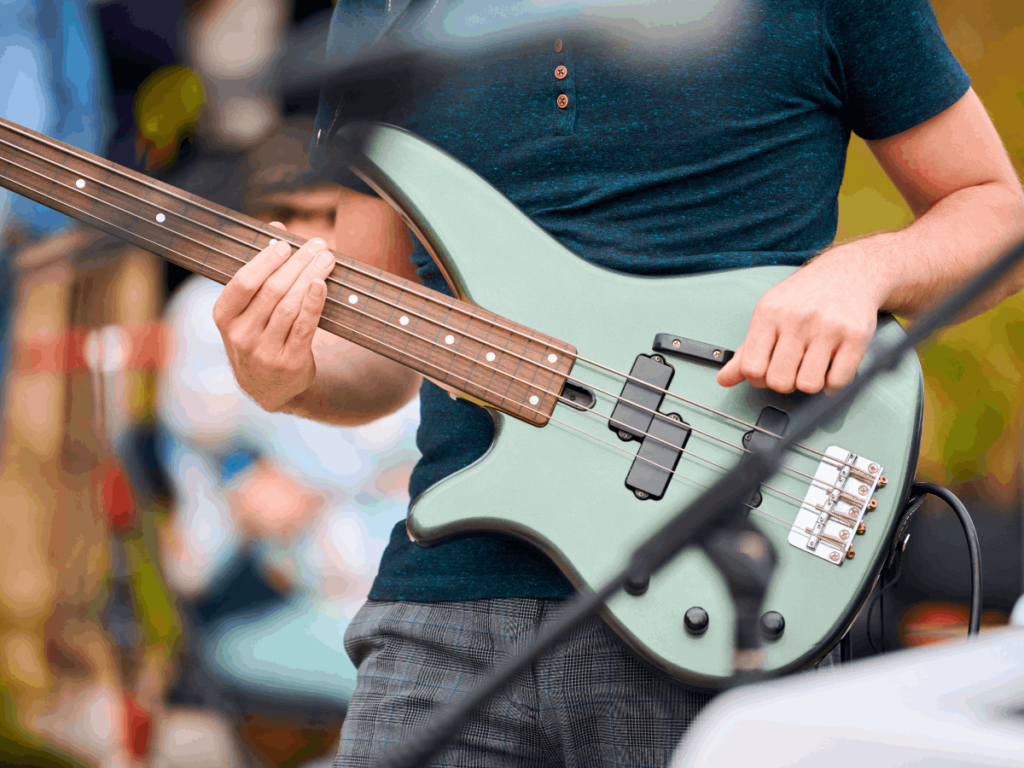
Many famous bassists, including Jaco Pastorius, Jeff Berlin, and Marcus Miller, use four-string basses.
These bassists have shown that a four-string bass can create various music styles and sounds.
However, there are some limitations to a four-string bass. The range of notes that can be played is more limited than on a five or six-string bass.
This can make it difficult to play certain songs or styles of music. Also, some bassists prefer the sound of a fretless bass or an acoustic bass, which are not typically four-string instruments.
The Five-String Bass

The five-string bass adds an extra low B string to the bass guitar notes standard four-string configuration, giving you an extended lower range to play with.
Pros and Cons of Five-String Bass Guitars
The advantage of having an extra string is that you can play lower-pitched notes without tuning down your instrument, which can cause tension on the neck and fingerboard.
The low B string also allows you to play higher-pitched notes on the other strings while maintaining accurate scale bass.
However, the extra string also adds weight to the instrument and may take some practice to get used to playing. The added tension on the neck and fingerboard can also make it harder to play higher-pitched notes accurately.
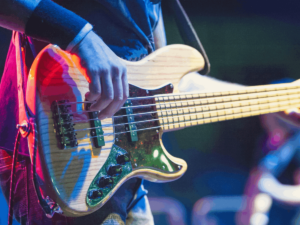
Many famous bassists, including Victor Wooten, Marcus Miller, and Billy Sheehan, use five-string basses.
The extended lower range of the five-string bass is trendy in rock music, where it’s used to create a heavier, more powerful sound.
The Six-String Bass

The six-string bass adds an extra high C string to the standard four-string configuration, giving you an extended range of notes to play with.
Pros and Cons of Five-String Bass Guitars
The advantage of a six-string bass is its versatility. With the extra string, you can play higher-pitched notes and solos while still maintaining the low end that bassists are known for.
The added string also gives you more options for playing styles, such as slap bass and fingerstyle.
However, some challenges come with playing a six-string bass. The extra string adds tension to the instrument, affecting the playability and weight.
The string spacing may also differ, making it harder to adjust if you’re used to playing a four-string bass.

Despite these challenges, many virtuosos have embraced the six-string bass. Some famous bassists who use six-string basses include Jaco Pastorius, Jeff Berlin, Flea, and Jack Bruce.
These bassists have used the extended range of the six strings to create unique solos and studio recordings.
When choosing a six-string bass, it’s important to consider the frequency range and accuracy of the individual strings.
The high C string should be accurate and in tune with the rest of the strings. The fingerboard should also be designed to accommodate the extra string without sacrificing playability.
Other Bass Configurations
While the traditional bass guitar has four strings, other configurations can provide more versatility and playability.
A three-string bass guitar is a great option for beginners just starting.
It’s easier to play and has less tension on the strings, making it more comfortable to play for longer periods.
However, it may limit your ability to play certain chords or songs that require a wider range of notes.

Seven-string and eight-string basses offer an extended range of notes, allowing for higher-pitched solos and lower-pitched basslines.
They also provide more versatility in playing styles, making them popular among virtuosos and studio musicians.
However, they may be heavier and more difficult to play due to the additional strings and require a higher skill level to play accurately.

Some famous bassists who use these alternative basses include John Myung of Dream Theater, who uses a six-string bass, and Tony Levin, who uses a ten-string Chapman Stick.
These bassists demonstrate the advantage of using extended-range basses in their music, allowing for more individuality and creativity in their playing.
Our Recommended Bass Guitar Strings

BEST OPTION FOR: Players who like to keep the funk alive
STRING GAUGE: Short scale, medium scale, long scale, extra long scale
FEATURES: Flatwound winding and a core from stainless steel; smooth strings
Rotosound Tru Bass 88 Black Coated Retro Bass Guitar Strings, 65-115
When you check the price above, you’ll see there are loads of great places to buy this item. Our personal favorite is Gear4music.
It is the largest music retailer in the UK and fast becoming the most respected online music shop in the US too. Their customer service is excellent, they have competitive prices, really fast shipping, and usually have the longest guarantee.
Most professional musicians use Gear4music, so there is no reason why you shouldn’t too!
- Great for blues, funk, and soul music
- Eligible for fretless bass guitar
- Offer warm tones
- The strings are not as versatile as others
The professional musician who wrote this article combined many things,
from the product build, manufacturer’s reputation through to feedback
from other users, to create our famous TedScore™.
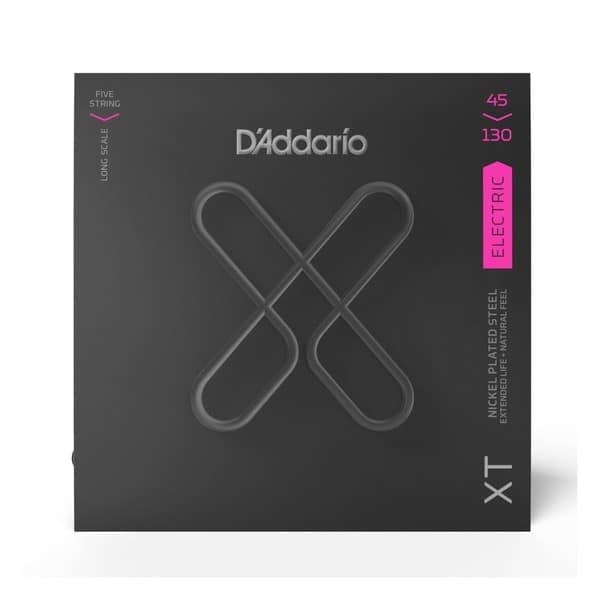
BEST OPTION FOR: Beginners and professional musicians
STRING GAUGE Multiple gauges are available; there are six-string packs and strings for GS Mini Bass
FEATURES: Nickel-plated and offer warm, bright, and all-around tones; sound like new for a long time
D'Addario XT NPS Regular Light 5-String Bass Strings, 45-130
When you check the price above, you’ll see there are loads of great places to buy this item. Our personal favorite is Gear4music.
It is the largest music retailer in the UK and fast becoming the most respected online music shop in the US too. Their customer service is excellent, they have competitive prices, really fast shipping, and usually have the longest guarantee.
Most professional musicians use Gear4music, so there is no reason why you shouldn’t too!
- Sound fresh for a long time
- Versatile
- Produce warm and bright tones
- Some players consider the sound too bright
The professional musician who wrote this article combined many things,
from the product build, manufacturer’s reputation through to feedback
from other users, to create our famous TedScore™.
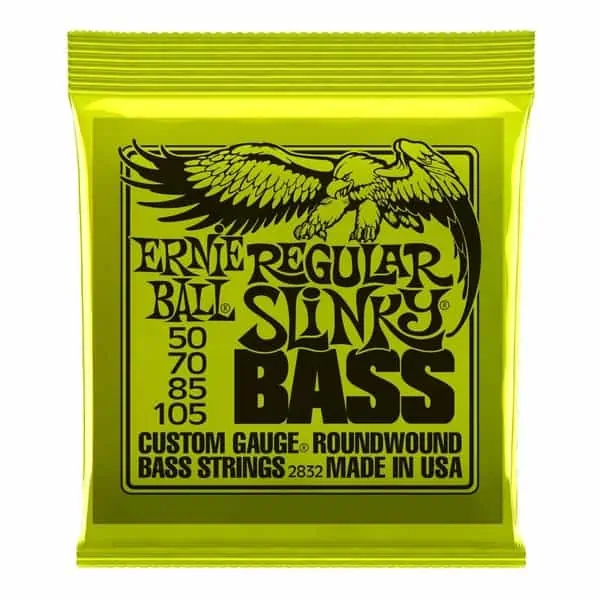
BEST OPTION FOR: Bass players who are into modern pop-rock music
STRING GAUGE: Available in multiple gauges from 40-95 to 55-110
FEATURES: The strings offer a contemporary tone, are durable, and come in many gauges
Ernie Ball Regular Slinky Nickel Bass Guitar Strings 50-105
When you check the price above, you’ll see there are loads of great places to buy this item. Our personal favorite is Gear4music.
It is the largest music retailer in the UK and fast becoming the most respected online music shop in the US too. Their customer service is excellent, they have competitive prices, really fast shipping, and usually have the longest guarantee.
Most professional musicians use Gear4music, so there is no reason why you shouldn’t too!
- Bright tones
- Durable
- Low price
- No vintage tones
The professional musician who wrote this article combined many things,
from the product build, manufacturer’s reputation through to feedback
from other users, to create our famous TedScore™.
How Many Strings Does A Bass Have?
Summary
Now that you know the number of strings on a bass guitar, get ready to rock and roll!
Choosing the right number of strings can change the sound you produce, so it’s crucial to pick the perfect one.
There’s no right or wrong answer here, folks. It’s all about what floats your boat and the type of music you want to jam out to. So, why not spice things up and try out different bass configurations?
Whether it’s a classic four-string, a funky five-string, or a wild six-string bass, each one has its unique sound and feel.
So, let your inner musician run wild and find the perfect configuration that suits your playing style and musical preferences!
Let’s get groovin’!
Before you go…
Choosing the right bass guitar without breaking the bank can make all the difference if you’re a bassist on a budget.
In this next post, we’ll explore the best basses under 500, so you can start jamming out like a pro in no time!
Check them out here: Best Bass Guitar For Under 500
FAQ's
No, 4-string basses are not the most common. While they are popular, 5-string and 6-string basses are also widely used in various musical genres.
Yes, a bass can have 6 strings. A 6-string bass adds an extra high C string to the standard 4-string configuration.
A 6-string bass is a type of bass guitar that has six strings instead of the standard four. It adds an extra high C string and a low B string to the standard configuration.
A beginner bass should have four strings. A four-string bass is the most common type of bass guitar and is easier for beginners to learn on.










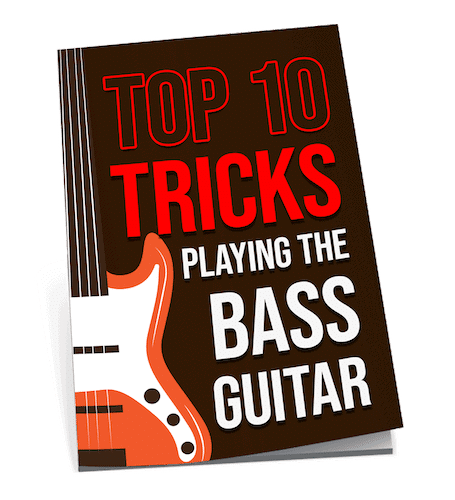
Quick correction on your section about six-string basses, it seems like the pros and cons were accidentally duplicated from the five-string section. Otherwise, solid overview!
I don’t get why everyone fusses over more strings. Four strings are classic and get the job done. Adding more just seems like it complicates things for no reason. Isn’t simpler better? But hey, if you can explain how more strings actually make a difference, I’m all ears.
It’s all about range and versatility, billy_the_kid. More strings mean you can play deeper notes without detuning and access more notes overall.
Great read! I’ve been playing bass for years and have a nice collection of both four and five-string basses. In my experience, each has its place depending on the genre you’re playing. Also, love the nod to six-string basses, they’re underrated in my opinion. Keep spreading the bass love!
Hey there, Hugh Richardson! Just got into playing the bass, and I’m sticking to the four-string for now since it seems easier for beginners. Wondering if you’ve got any tips for transitioning to a five or six-string later on? Thanks a bunch!
Hey MaggieS, just keep at it and practice a lot. Moving to more strings gets easier with time.